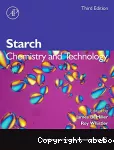1 History and Future of Starch
1 History and Future of Starch
+
-





